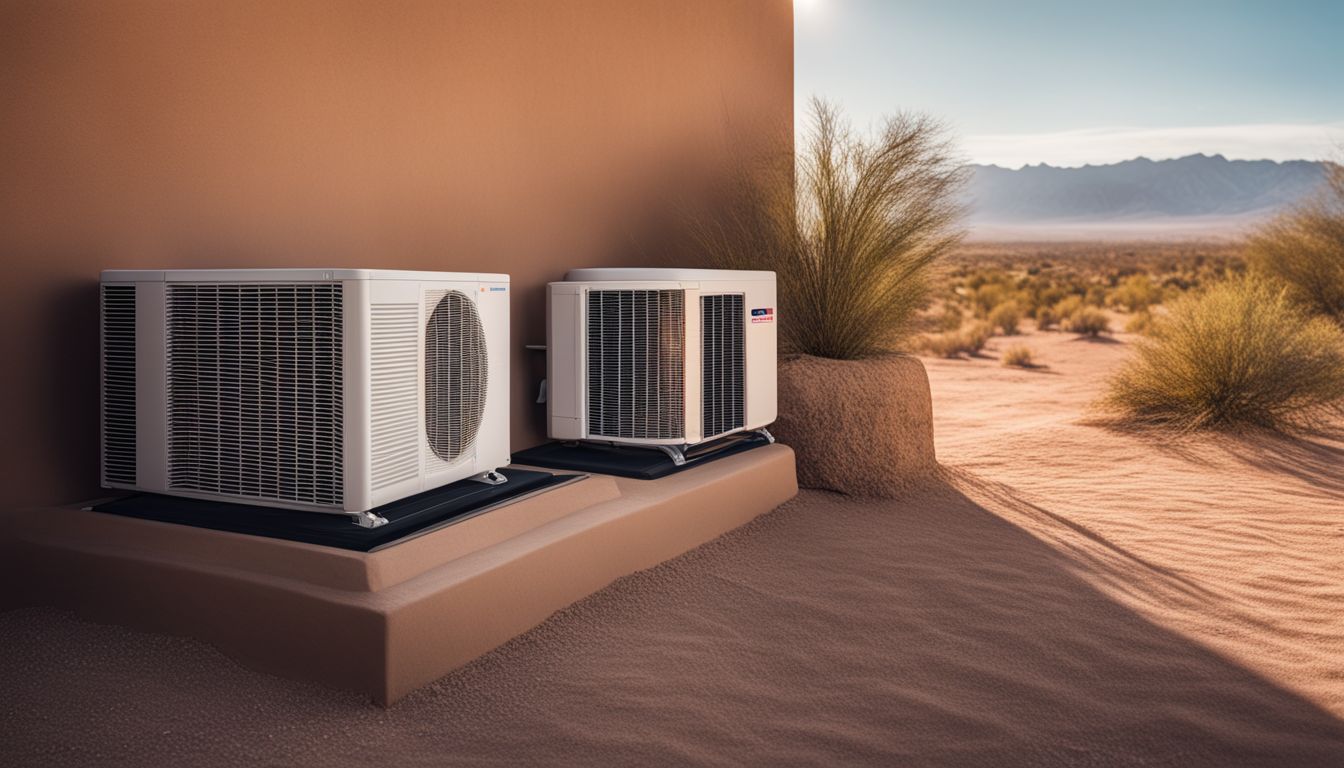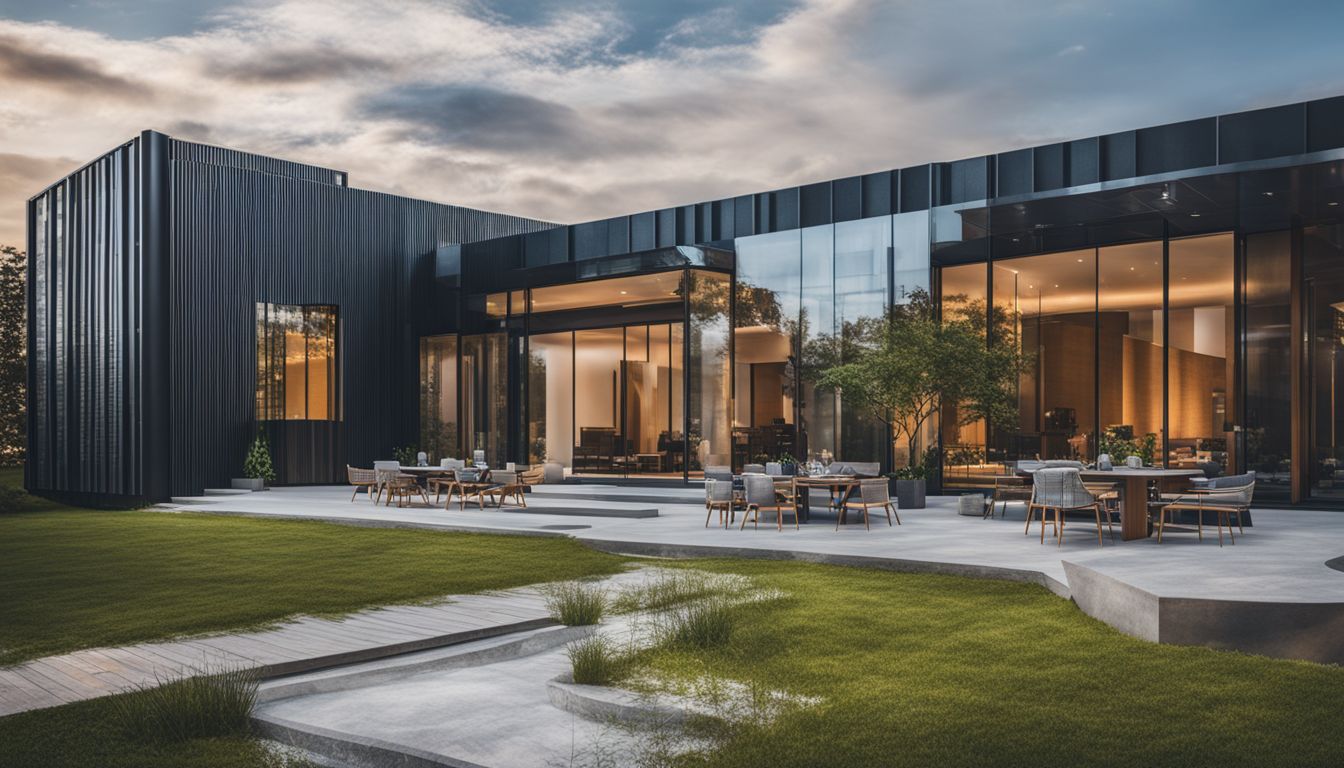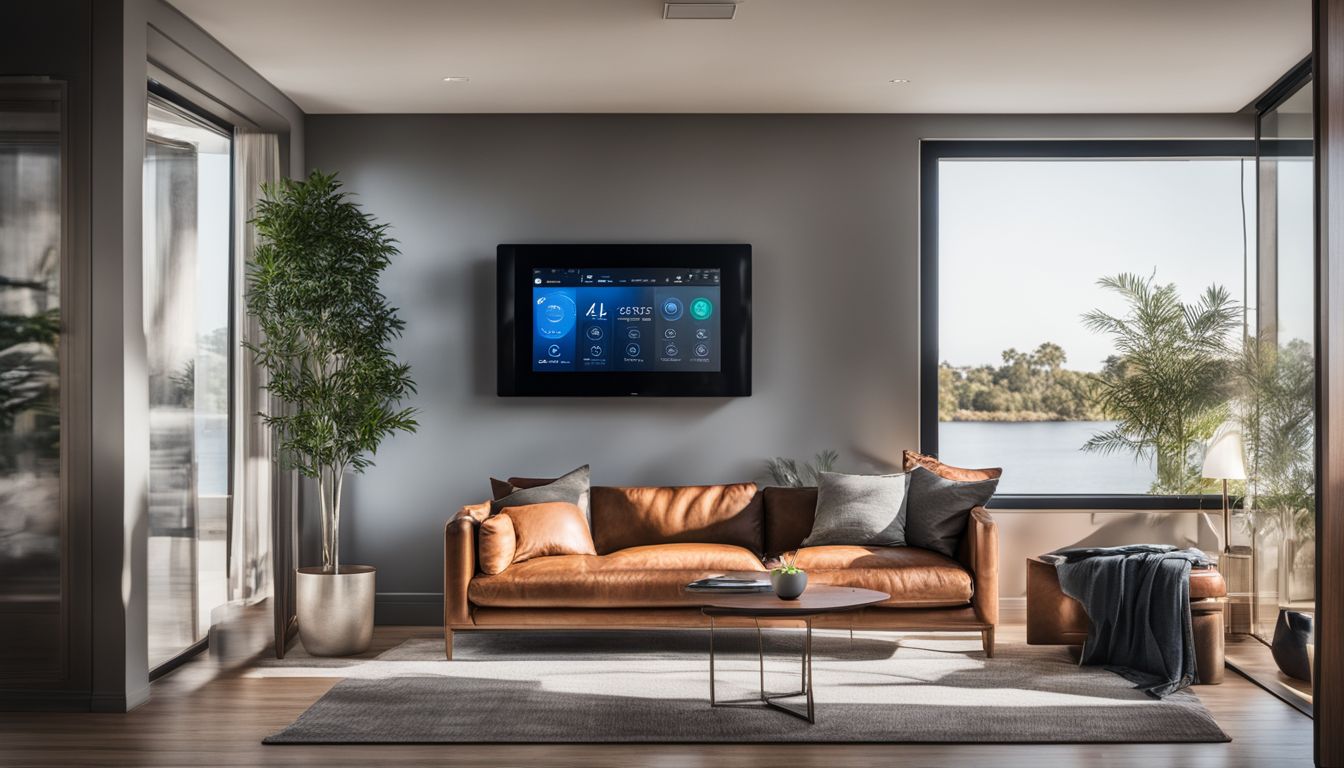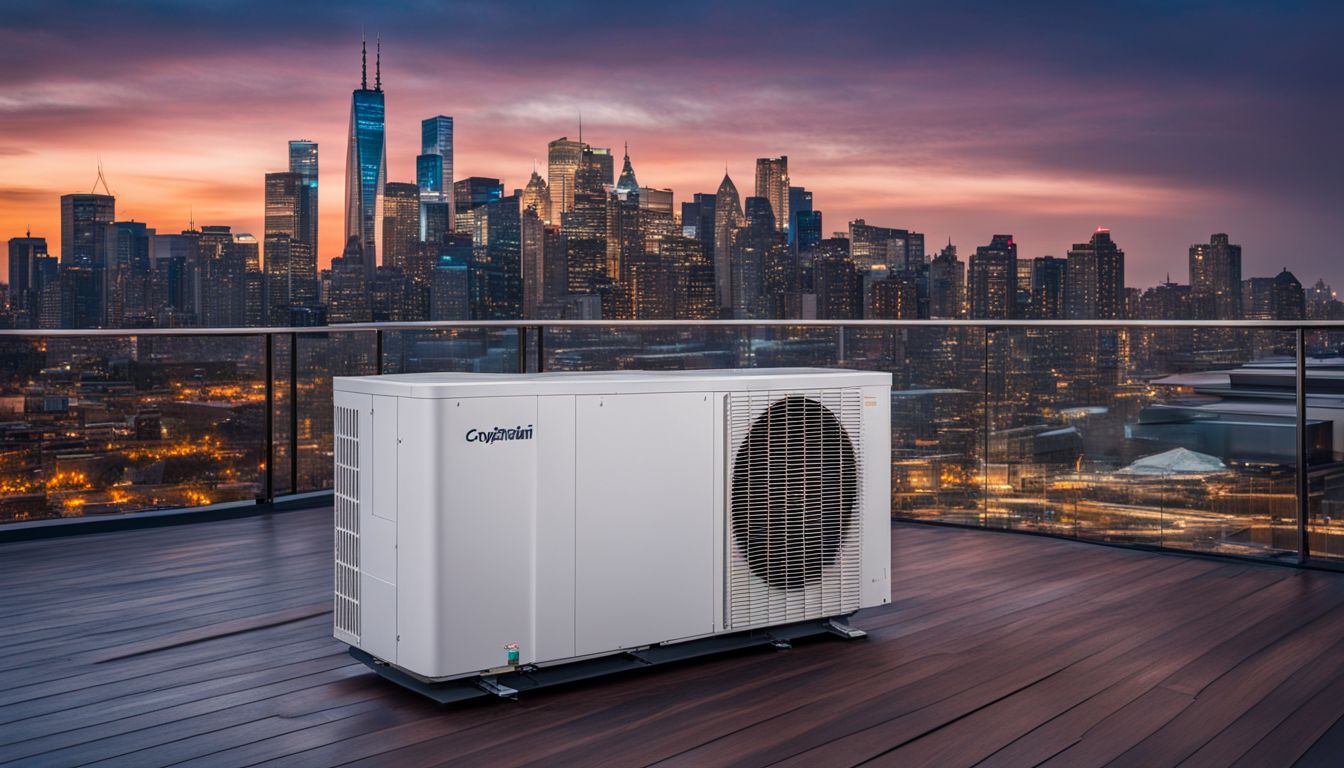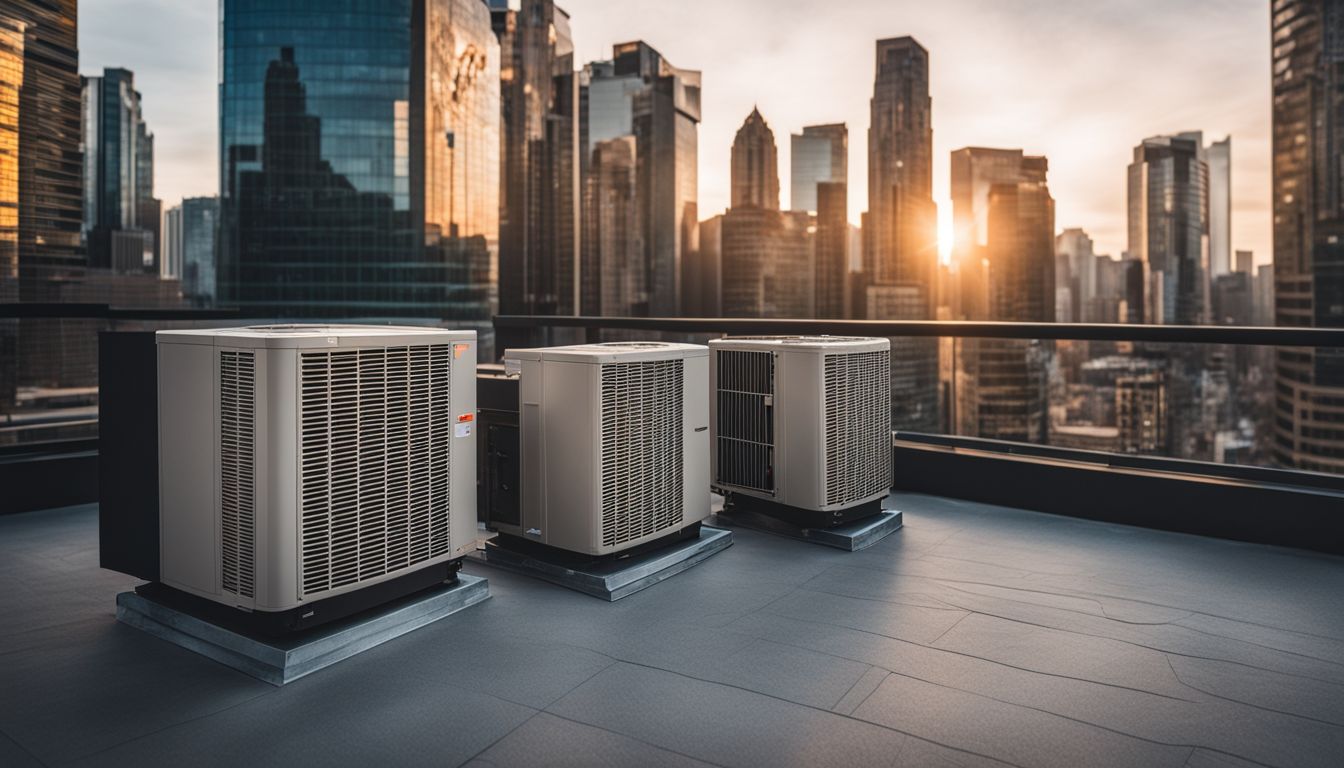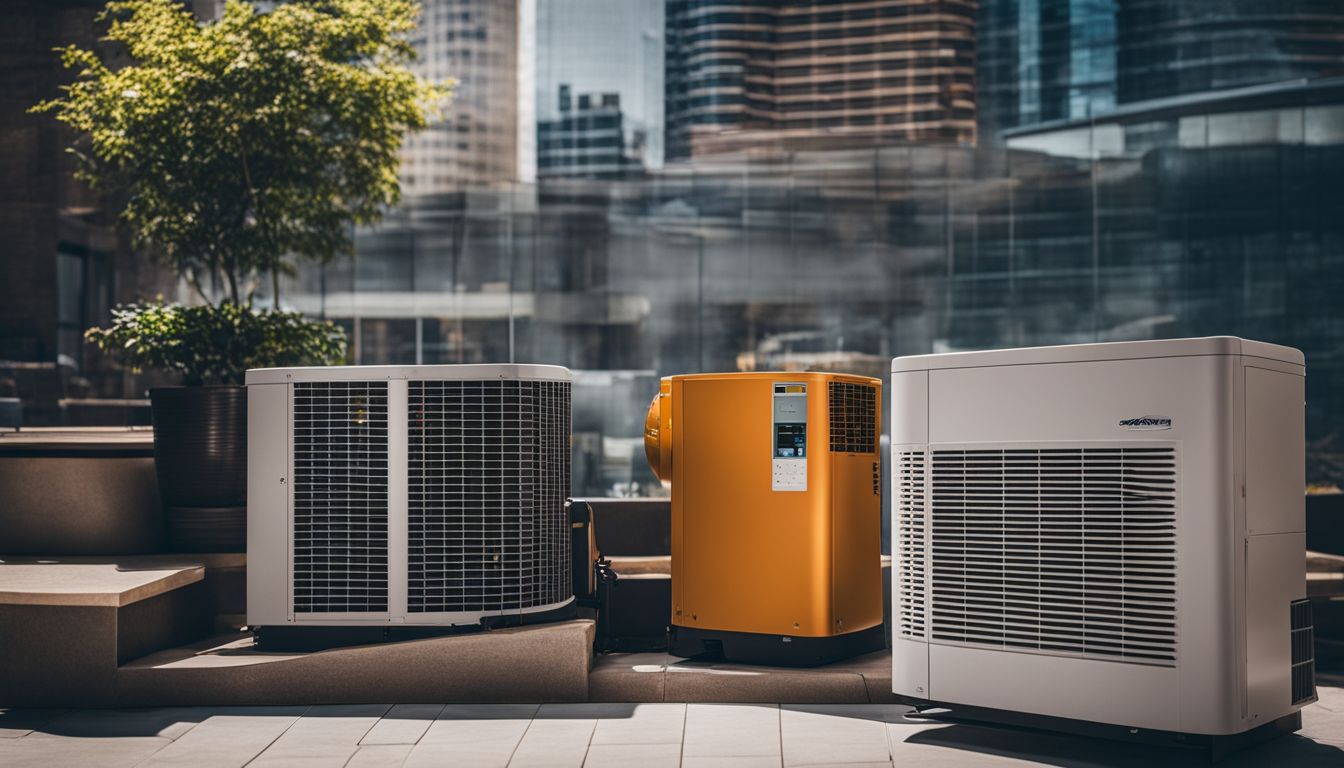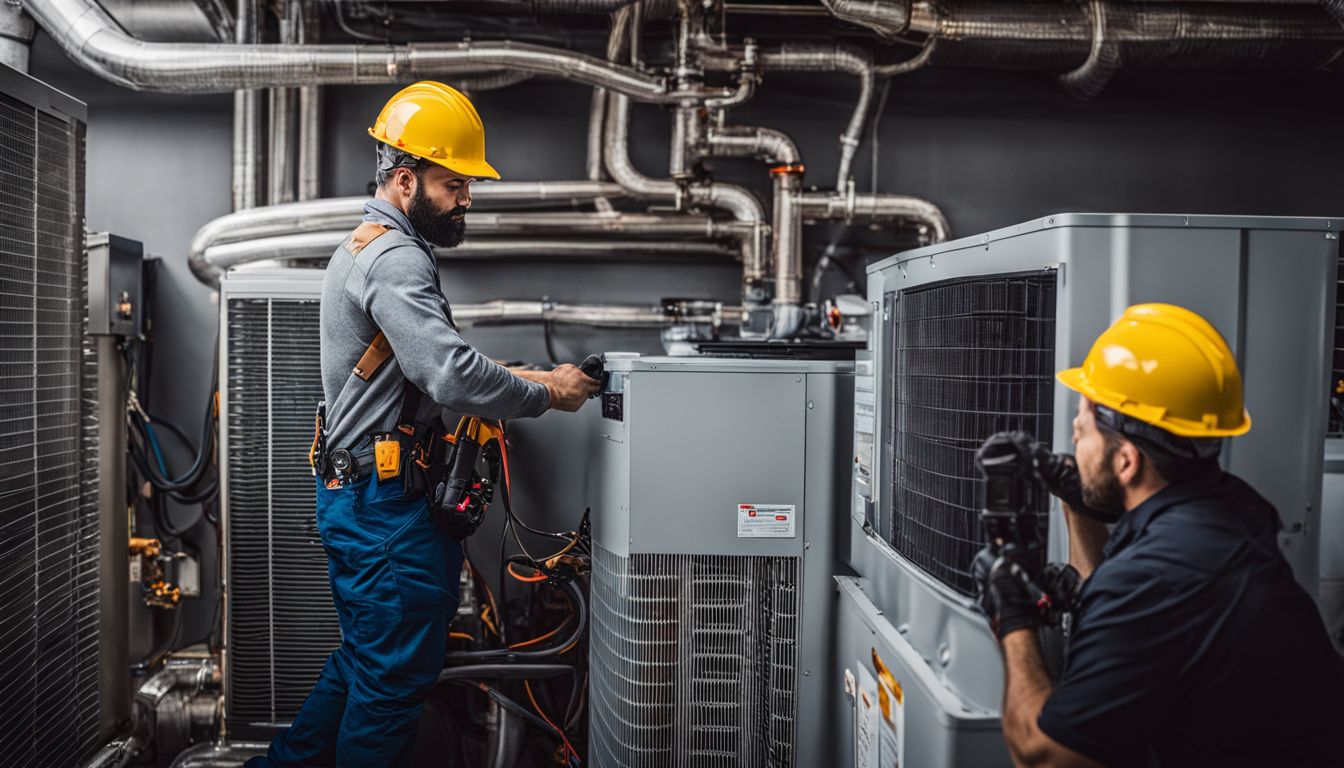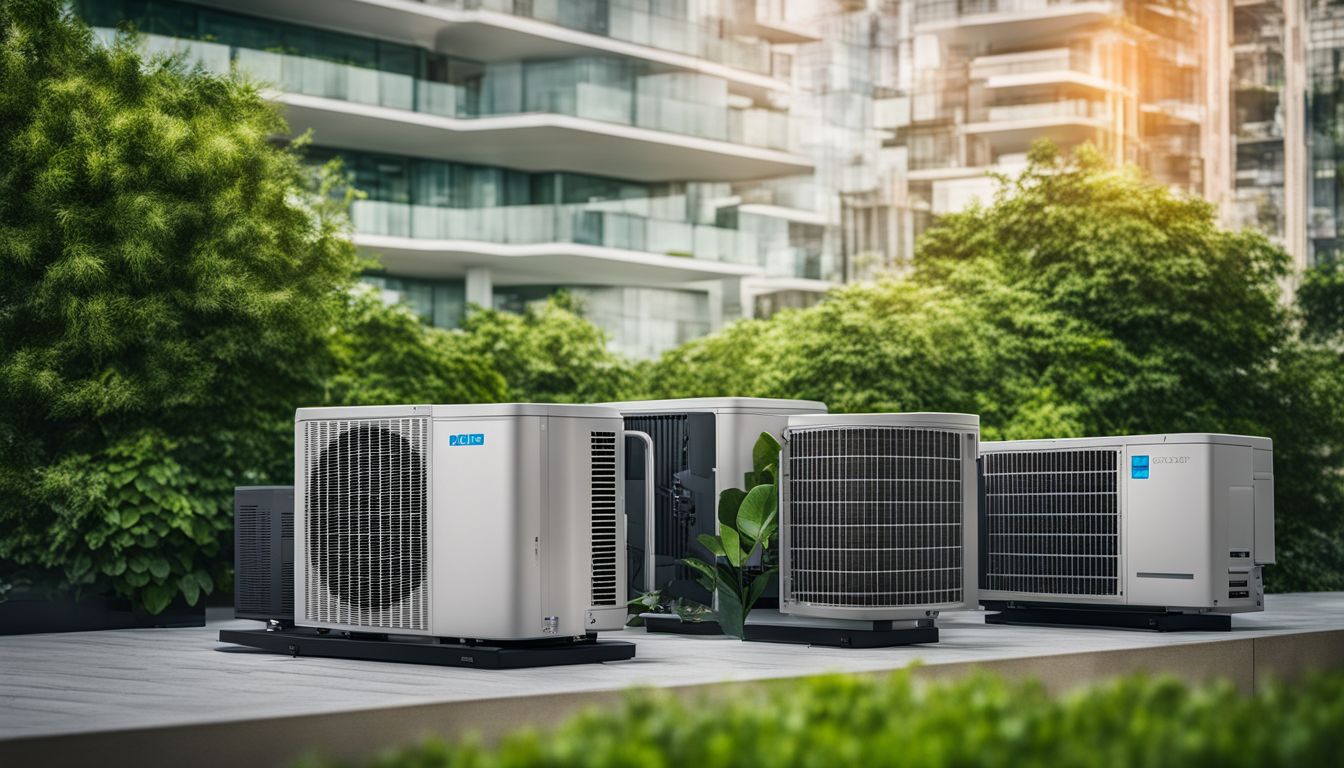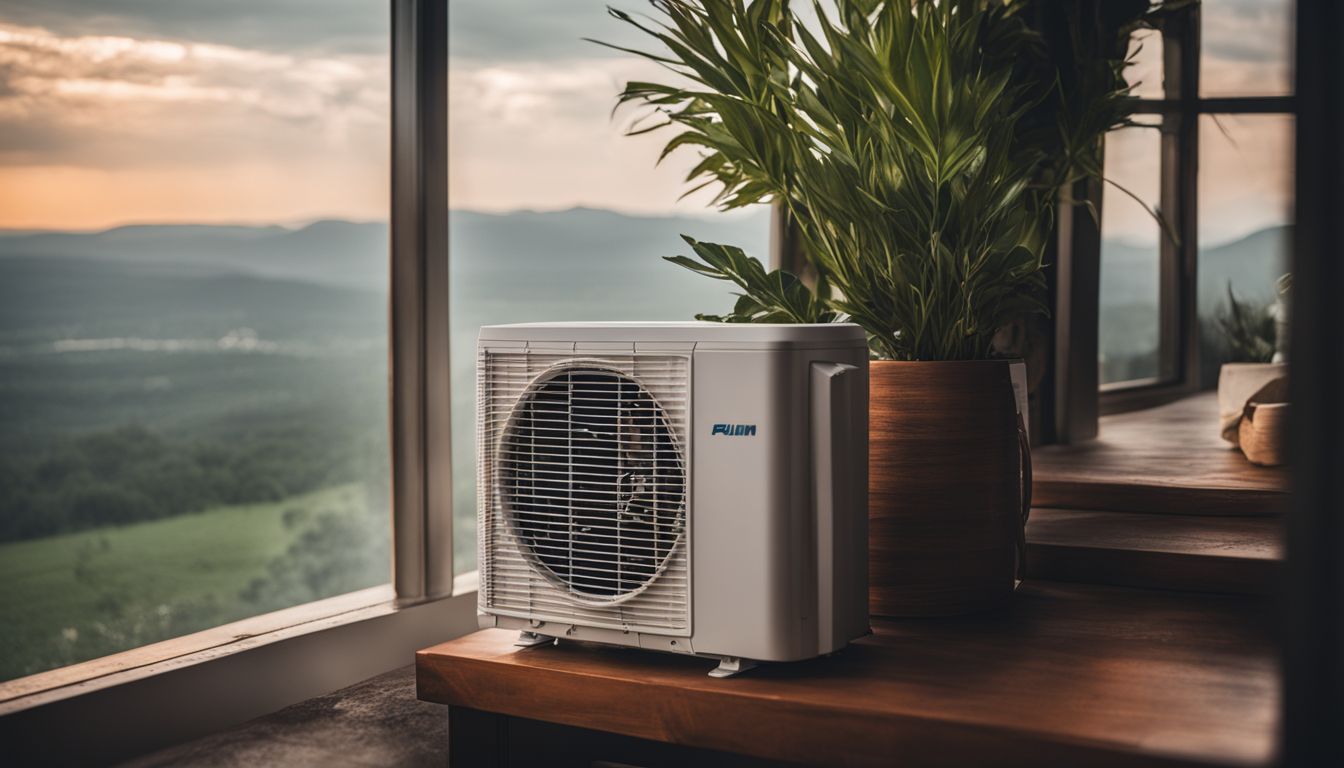Weather-Responsive Cooling is about making air conditioners work better with the weather where you live. Think of it like choosing clothes for the day; your air conditioner needs to match the climate outside.
Scientists and experts are looking at how our changing world affects what kind of cooling systems we should use.
The weather plays a big part in how much energy our air conditioners need. If it gets just 1°C warmer than 21°C, the United States can save a lot of money on energy. People think more about buying efficient air conditioners when it’s too hot or cold, or if they have to pay too much for electricity.
Knowing all this helps us pick better cooling systems that save power and are good for any place. Places around the world will see more people using these smart air conditioners by 2040, but not everyone might be able to afford them right away.
Cooling that changes with the weather also means we could use less energy overall by picking settings that match local climates closely. This idea isn’t just about new technology; it’s also about helping people choose smarter ways to stay cool without wasting energy or hurting nature.
Our story begins here: How can we make sure everyone enjoys comfortable homes all year round without wasting too much power? Let’s explore this cool idea some more!
The Role of Weather in Air Conditioning
Air conditioning systems are inextricably linked to the weather, as variations in temperature and humidity directly influence energy consumption and operational efficiency. As we adapt our built environment to a changing climate, it becomes crucial that these systems are designed with an acute awareness of local meteorological conditions.
Effects of Weather on Energy Consumption
Hotter days make air conditioners work harder, using more electricity. This means energy costs go up as the temperature climbs. For example, if it gets 1°C warmer than 21°C outside, people across the country could spend about 35.46 million dollars less on total energy.
Cold weather affects energy use too. When temperatures drop just 1°C below that same point of 21°C, nationwide savings can reach around 17.73 million dollars in energy expenses.
Weather doesn’t just change day to day; it’s different from place to place as well. Air conditioning systems must deal with these changes to keep indoors comfortable without wasting power.
Understanding how weather drives energy usage helps us choose better systems for our homes and offices.
Homes in warm places like deserts need cooling systems almost all year round. These systems have to be strong enough to handle the heat while not using too much electricity. In colder spots, heating is more important, but on hot days efficient cooling still matters a lot.
Adapting to Climate Change with Air Conditioning
Air conditioners are becoming vital for adapting to the hotter days caused by climate change. People rely on them for comfort and safety in extreme heat. As temperatures rise, more households, especially in tropical and subtropical regions, see air conditioning as necessary.
However, many families cannot afford these cooling systems. This creates a gap between those who can adapt and those who cannot.
Energy-efficient air conditioning units help reduce greenhouse gas emissions while keeping homes cool. New technologies make these systems smarter so they adjust to the weather without using too much power.
Heat pumps and evaporative coolers provide energy savings and humidity control during hot periods. They offer thermal comfort with less impact on our planet’s climate. It is crucial that everyone has access to such technology to protect against heat stress and maintain public health equity.
Weather-Responsive Cooling: A Solution for Energy Efficiency
Weather-responsive cooling systems present an innovative approach to energy efficiency, finely tuning air conditioning outputs to align with meteorological patterns. These dynamic HVAC solutions harness local climate data to optimise indoor temperatures, thereby reducing energy consumption and enhancing performance in a variety of weather conditions.
Understanding the Concept
Weather-responsive cooling systems adjust the air conditioning based on local climate conditions. They use real-time data like temperature and humidity to control how much cooling is needed.
This smart technology makes sure homes stay comfortable without wasting energy. It’s a big step towards cutting down energy bills and reducing our carbon footprint.
These systems learn about your daily routine and local weather patterns. As temperatures rise from global warming, especially in tropical countries, this tech is key for sustainable living.
It can help low-income areas where heat stress is a real danger. By matching cooling needs with current weather, these systems provide efficient comfort even as climates change around the world.
Benefits of Weather-Responsive Cooling Systems
- Energy savings: These cooling systems reduce energy consumption by adjusting the cooling load based on external temperatures and humidity levels.
- Lower electricity bills: Homeowners experience reduced utility costs as the air conditioner uses less power during cooler days or nights.
- Improved comfort: Residents enjoy a consistent indoor climate without drastic temperature fluctuations, no matter how much the outdoor weather varies.
- Less strain on the unit: Cooling systems experience reduced wear and tear when they operate in response to actual weather conditions rather than at a constant rate.
- Environmentally friendly: By lowering energy use, these systems contribute to combating climate change and help achieve net zero emissions targets.
- Enhanced lifespan of equipment: With less operational stress, the air conditioning units often have a longer life expectancy.
- Adaptation to climate change: As global temperatures rise, these smart systems can adjust cooling needs accordingly, showing high adaptive capacity.
- Automatic adjustments: The system can integrate with smart technology to automate changes based on real-time weather data forecasts.
- Reduced carbon footprint: Lower energy consumption also means fewer greenhouse gas emissions from power plants supplying electricity for cooling purposes.
- Better indoor air quality: Maintaining consistent temperatures can help control humidity levels indoors, which can improve overall air quality within a space.
Understanding How Location Shapes Aircon Performance
The place you live can change how well your air conditioner works. Hot cities need ACs that are strong and can work for many hours. Near the sea, aircons must handle moisture without getting damaged.
In cold places, they should not use too much energy when it gets a little warm.
Mountains have cooler air but may make an AC work harder because of thin air. Places with lots of plants need systems that can fight off mold and pollen. Every location has its own needs for cooling homes and buildings well.
Factors Influencing Air Conditioner Purchases
The selection of air conditioning systems is often dictated by a myriad of considerations, such as the specific demands of local weather patterns and the imperative for energy-efficient operation.
These choices are pivotal in ensuring that cooling solutions not only respond effectively to climate variations but also align with broader sustainability targets.
The Importance of Climate-Responsive Systems
Climate-responsive systems are key for energy efficiency and helping people save money. They adapt to changes in weather, keeping homes comfortable year-round. For example, higher temperatures can push people to buy Energy Star air conditioners.
These aircon units use less power and reduce the risk of high bills.
Picking a climate-responsive HVAC system means you get the right fit for your area’s weather patterns. If you live where it’s really hot, an evaporative cooling system might work best.
This makes sure that during heatwaves or cold snaps, your home stays at the perfect temperature without wasting energy.
The Impact of Weather on Energy Efficiency
Weather plays a critical role in how much energy our air conditioners use. As temperatures rise above 22°C, people often buy more Energy Star-rated cooling systems. These systems are designed to be more energy-efficient.
If the weekly temperature goes up or down by just 1°C from the ideal 21°C, it can lead to massive changes in energy costs across the country.
Hot weather makes us use our air conditioners more, increasing electricity bills and affecting energy efficiency negatively. A smart way to handle this is through weather-responsive cooling strategies that adjust usage according to the current climate conditions.
This approach helps make homes comfortable while saving money and reducing overall energy consumption.
The Role of Temperature in Air Conditioner Selection
Understanding the impact of weather on energy efficiency leads us to consider temperature as a key factor in choosing air conditioners. Selecting the right aircon goes beyond just finding a cooling solution; it’s about matching the system to the climate you live in.
Energy Star-rated units show their best performance when temperatures range from 20 to 22°C for cooling. This optimal range is crucial because outside these limits, people might switch to different heating devices instead of using their air conditioner.
Temperature plays a vital role in shaping decisions about which air conditioner suits your needs. For households especially, picking an energy-efficient model can lower carbon emissions and cut down costs on bills.
It’s clear that encouraging consumers to focus on temperature-resilient systems supports both environmental goals and financial savings. These climate-responsive choices are not only smart but necessary steps towards adapting our homes for future weather patterns while considering socio-economic conditions, particularly aiding low-income families who may suffer most from extreme heat impacts.
Choosing the Ideal HVAC System for Different Climates
Selecting an optimal HVAC system necessitates a nuanced understanding of your specific climate, ensuring both comfort and energy efficiency throughout the year’s varying temperatures.
Understanding Your Climate
Your climate plays a crucial role in how effective your air conditioning will be. In hot, dry areas, evaporative coolers, also known as swamp coolers, may work well. They use less energy and add moisture to the air.
Meanwhile, traditional air conditioners are better for humid climates. You need to think about local conditions like temperature swings and humidity levels.
Climate-responsive systems match cooling needs with weather patterns. These HVAC systems adapt to changing temperatures and can handle extreme heat or cold. Making sure your system fits your location’s climate is key to comfort and efficiency.
The next step is focusing on proper sizing of the unit for peak performance.
The Importance of Proper Sizing
Choosing an air conditioner that fits your space just right is crucial. If it’s too small, it won’t cool your home effectively on hot days. On the other hand, an oversized unit will cycle on and off too often.
This can lead to wasted energy and increased wear and tear. Sizing impacts comfort levels and helps reduce energy bills.
A well-sized HVAC system runs efficiently in any climate. It meets cooling degree days (CDDs) demands without overworking. The goal is to achieve a balance where both performance and energy use are optimised.
This ensures lasting durability for households across different income levels, while also addressing inequalities in access to durable goods like efficient cooling systems.
Energy Efficiency Considerations
Proper sizing sets the stage for energy efficiency. HVAC systems need to match the specific requirements of different climates to work best. An oversized aircon wastes energy and does not remove humidity effectively, leading to discomfort and higher costs.
A well-sized system runs better cycles, lasts longer, and saves money.
Energy Star air conditioners grow more popular as temperatures move away from 20-22°C. These conditions highlight the importance of climate-responsive cooling solutions that adapt power use based on outside temperatures.
By opting for a high Seasonal Energy Efficiency Ratio (SEER) unit, homeowners cut down on consumption and reduce nationwide energy bills significantly.
Key Advantages of Climate-Responsive HVAC Systems
Climate-responsive HVAC systems have emerged as pivotal in enhancing energy efficiency and ensuring consistent comfort, irrespective of the capricious nature of local weather patterns.
These systems exemplify adaptability by dynamically adjusting output to match climatic fluctuations, thereby offering a harmonised balance between human comfort and environmental sustainability.
Energy Efficiency
Weather-responsive cooling systems significantly reduce energy consumption in air conditioning. They adjust the cooling output based on real-time weather data. This approach helps maintain comfort levels while using less electricity.
Studies show that if temperatures rise or fall by just 1°C from the ideal 21°C, nationwide energy costs change dramatically. A rise results in a substantial decrease of $35.46 million, and a fall leads to savings of $17.73 million.
Implementing strategies like these can make homes and offices more energy efficient. They narrow the gap between current practices and optimal usage scenarios for heating and cooling equipment with high SEER ratings (Seasonal Energy Efficiency Ratio).
These adaptive systems support efforts to mitigate climate change impacts by optimising performance according to local weather conditions, leading to greener building solutions and sustainable living environments.
Adaptability to Climate Changes
Air conditioning systems that adapt to climate change are key. They handle rising temperatures and keep homes cool. Traditional air cons use a lot of energy when it’s hot. But, adaptive systems adjust to the weather outside.
This way, they save electricity and reduce costs.
Climate-responsive HVAC systems do this well. They consider local weather patterns and your home’s needs. As the climate shifts, these smart systems shift too. They help you stay comfortable all year round without wasting energy.
Next, we’ll explore comfort throughout the year with these advanced HVAC solutions.
Comfort Throughout the Year
Climate-responsive HVAC systems are tailored to local weather patterns. They adjust cooling and heating for consistent comfort all year round. These advanced systems use forecasts to plan their operations, maintaining the perfect temperature indoors despite changing seasons.
They also consider humidity levels, ensuring that air doesn’t become too dry in winter or overly moist in summer. This approach not only keeps people comfortable but also reduces energy consumption significantly.
It avoids the need for constant manual adjustments, making life easier and more pleasant regardless of the weather outside.
Integrating Weather Forecasts into HVAC Systems
Integrating weather forecasts into HVAC systems marks a significant shift towards proactive, climate-smart cooling solutions. This innovation harnesses predictive meteorological data to enable dynamic adjustments in air conditioning operations, tailoring output to forthcoming temperature variations and humidity levels for optimised energy efficiency.
The Role of Evaporative Cooling Systems in Hot Climates
Evaporative cooling systems are crucial in hot climates. They use the natural process of water evaporation to cool the air, which can be more energy-efficient than traditional air conditioning.
These systems work best in areas with low humidity, as dry air absorbs moisture more effectively. By drawing warm outside air through wet pads, they lower the temperature indoors.
Hot climates often face high temperatures and thermal discomfort. Evaporative cooling offers an affordable solution for low- and middle-income households. It matches well with the increasing demand for space cooling in regions where rising heat is a challenge.
The robustness of these systems allows them to provide relief during scorching days while reducing energy consumption compared to central air conditioning units.
Automatic Adjustment of Cooling Levels
HVAC systems are getting smarter. They can now adjust cooling levels by themselves using weather forecasts.
- Smart thermostats use the internet to get local weather information.
- They predict when and how much to cool your home or office.
- This system saves energy by not overcooling spaces.
- During cooler days, the system reduces air conditioning use.
- On hot days, it increases cooling before temperatures peak.
- The technology helps maintain a steady indoor temperature.
- It responds quickly to sudden weather changes.
- Users save money on electricity bills with these adjustments.
- The system learns from daily weather patterns over time.
- It adapts to both dry-bulb (CDDdb) and wet-bulb (CDDwb) cooling degree-days from climate models.
- It contributes to reduced energy consumption in buildings.
The Importance of Professional Installation and Maintenance

Expert oversight during these processes helps to avoid common pitfalls that can compromise system performance and energy efficiency.
Ensuring Optimal Functioning
Proper installation and maintenance of air conditioning systems are critical. They keep the system running smoothly in various climates. Specialists must handle setup to match local weather patterns.
This ensures units work at their best and use less energy.
Regular check-ups prevent breakdowns and extend a system’s life. Technicians look for any issues that could cause harm or extra costs. Clean filters, well-oiled parts, and correct refrigerant levels mean your aircon is ready for any weather change.
Prolonging the Lifespan of the System
To ensure an air conditioning system operates well for years, regular maintenance is vital. Trained professionals know how to keep your system running smoothly. They check for problems and fix them before they get worse.
This care helps your aircon last longer.
Scheduled upkeep also protects the parts of your AC unit. Filters need changing, coils require cleaning, and refrigerant levels must be monitored. These tasks keep the system from working too hard, which can cause wear and tear.
Careful attention to these details ensures that your air conditioner remains energy efficient throughout its life.
The Future of Weather-Responsive Cooling
The advent of weather-responsive cooling systems portends a significant shift in HVAC technology, promising to align with the nuanced demands of evolving global climates. Anticipated technological advancements in this sphere are poised to redefine energy efficiency and comfort in both residential and commercial spaces.
Predicted Adoption of Climate-Responsive Systems
More people will start using climate-responsive systems soon. By 2040, a big jump in how many of us have aircon is expected. This change is because the weather is getting hotter and more folks can now afford cooling devices.
Brazil, Mexico, India, and Indonesia need lots of air conditioning because they are very hot countries.
Cities are growing fast, and more houses have electricity. These changes make it easier for people to get air conditioners in places that really need them due to high heat levels. As homes get cooler inside, we use more power too.
This means we’ll also have to think about how much energy air conditioners use when making new policies or building greener houses. Climate-smart AC systems help save energy and adapt as the world’s weather changes over time.
The Impact on Urban Building Energy Use
Urban buildings consume a lot of energy for cooling, especially when temperatures rise. But with weather-responsive HVAC systems, this energy use can drop significantly. If the temperature increases by just 1°C above an optimal 21°C, nationwide savings in energy expenditure could reach $35.46 million.
Conversely, if it drops below that ideal point, savings still hit $17.73 million.
Cities are embracing these smart climate-responsive technologies to cut costs and save energy. They adjust air conditioning based on real-time weather data and forecasts to optimise indoor comfort and efficiency.
This shift toward integrated systems supports sustainable building trends and helps urban centers manage their growing energy needs more effectively.
Next up is how proper maintenance ensures your system keeps running smoothly.
Conclusion
Weather-responsive cooling is stepping forward in energy efficiency and climate adaptability. Recognising the need for flexible systems proves critical as temperatures veer from comfort zones.
HVAC technology that adjusts to local climates can decrease national energy costs significantly. The move to align air conditioning with weather patterns marks a clever approach towards sustainable living.
Such innovations promise improvements for homeowners and the environment alike.
FAQs
1. What is weather-responsive cooling technology?
Weather-responsive cooling technology aligns an air conditioning system with local climate conditions, using statistics and climate modelling to provide energy-saving cooling solutions.
2. How do geothermal systems contribute to weather-responsive cooling?
Geothermal systems use the stable temperature of the earth for heating or cooling, which makes them a key component in green building designs that respond to varying climatic conditions.
3. Can weather-responsive systems adapt to urbanisation effects?
Yes, emerging economies experiencing rapid urbanisation can benefit from such systems as they are designed considering linear trends and representative concentration pathways related to urban climates.
4. Are there any innovations for low-income households in regards to weather-responsive technology?
Innovations include affordable insulation options and ventilation systems that utilise smart technologies like the Internet of Things (IoT) and energy recovery ventilators, making efficient cooling accessible for low-income homes.
5. How does the integration of IoT improve weather-responsive air conditioning systems?
The Internet of Things enhances these systems by allowing real-time adjustments based on data analysis from global climate models (GCMs), optimising performance for energy-saving purposes.
6. What statistical methods are used in developing weather-responsive air conditioning units?
Developers often employ two-stage least squares and error term assessment alongside training datasets to refine algorithms within air handler units ensuring precise response to climatic changes.



